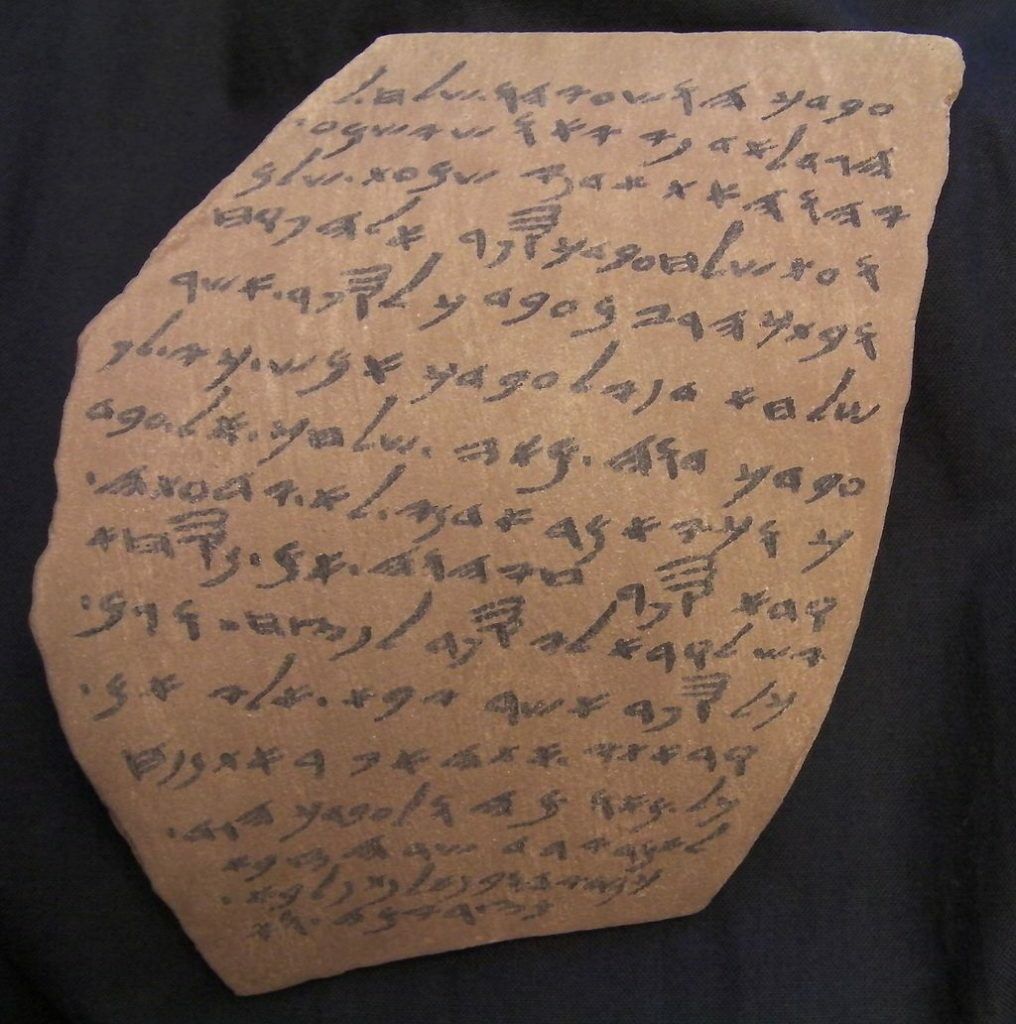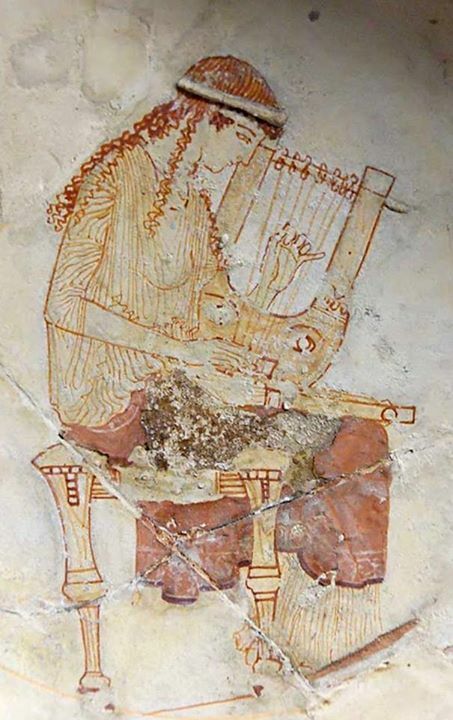The dating of the Bible is a controversial topic, to say the least. Traditionalists say the Torah was written by Moses in the 15th century; the Psalms mostly by David in 10th century; Daniel? Sixth century b.c.e.
Revisionists, on the other hand, say the Torah was written after the Babylonian captivity—along with everything else, really. Daniel? Second century b.c.e. They also say that books named after individuals were most likely written by multiple ghostwriters.
This is an intense debate. Just how ancient and authentic are the biblical writings? Can we really know the answer?
This article concludes our three-part series, examining the archaeological evidence, linguistic style, textual content, and contemporary works related to the authenticity of the Bible. The Hebrew Bible is divided into three main sections: the Torah (Law), the Prophets, and the Writings. For this final installment, we’ll look at the Writings.
The Writings include a large number of books from the Hebrew Bible. In the interest of keeping this article from turning into a multivolume work, we’ll cover only a few. We’ll cover the first books briefly, before going in-depth with Daniel—more than any other, this book receives intense scrutiny and criticism. (Note: Daniel is obviously one of the biblical prophets; however, his book is classified in the Hebrew Bible as part of the Writings—thus we cover it here.)
The Book of Ruth
Traditionalists say this book was likely written very early, likely by the Prophet Samuel. Minimalists say it was written well after the 585 b.c.e. exile. They conclude that it is an allegorical story, designed as a response to strict laws Ezra and Nehemiah were enforcing against marriage with Gentiles.
Outside of the first five books of the Bible (the Torah), the Hebrew writing in Ruth is one of the oldest styles found anywhere in the Bible—if not the oldest. The repeated use of very early words and spelling would be extremely unusual—if not virtually impossible—for a postexilic writer to accurately represent. Thus it naturally fits a very early period of writing, and as one leading critic admitted, the ancient stylistic “purity” of the book sends it “decidedly to the pre-exilic period” (pre-586 b.c.e.).
Regarding the claim that this book was a response to strict enforcement of marital laws by Ezra and Nehemiah, it is clear that painting interracial marriage favorably was decidedly not the intent for the book of Ruth. This is brought out by several factors, but would be a long, separate study. For the purposes in this article: Even if it were a retaliatory piece, any attempt to paint interracial marriage in a favorable light in the postexilic period would almost certainly have been met with a great backlash (the incidents with Nehemiah and Ezra notwithstanding). It would be an immense stretch to believe that such a late, fraudulent, revolutionary apocryphal book would be accepted into the holy canon of Scripture by the strict Jewish authorities. It certainly couldn’t have been designed in retaliation to Nehemiah and Ezra—particularly considering the great recognition Ezra is given in organizing and preserving the biblical canon.
The primary piece of evidence for this book, then, is textual style, which certainly points to a very early composition date, one that would fit comfortably with Samuel’s time period—around the 11th century b.c.e. Certainly not 600-plus years later.
The Book of Lamentations
Traditionalists say that Jeremiah wrote Lamentations after the death of King Josiah—knowing Judah faced imminent destruction (2 Chronicles 35:25). Some traditionalists also believe that it was written just after the destruction of Jerusalem—still roughly within the same time period. Skeptics say that Lamentations is a much later imaginary, theological idea of what the destruction of Jerusalem looked like.
There are many similarities between the style and wording of the books of Jeremiah and Lamentations, so it would make sense that the same author wrote both books. Of course, the minimalists say that both were written by a late author. But archaeology has something to add regarding the composition of Lamentations.

This book is written in an acrostic style, sequentially following each letter of the Hebrew alphabet. The first chapter’s alphabetical order is the same as the late-modern Hebrew alphabet. However, the acrostics throughout the remaining three chapters are different from the Hebrew alphabet of late writings. The alphabetical order of two of the letters—ayin and peh—is switched. This does have early archaeological precedent, thus indicating the text is of a slightly earlier composition date. A Hebrew “abecedary” was found during excavations at Tel Zayit (above), dating to the 10th century b.c.e. The order of several letters in this alphabet were found different from the modern Hebrew alphabet—including the reversal of the letters ayin and peh, just as with the main part of the acrostics in Lamentations. From this, and other related alphabet finds, we can deduce that by Jeremiah’s day much of the alphabet had been changed to the later order—except for a tentative holdover of the order of ayin and peh. If the book of Lamentations had been written at such a late date, we would expect the entire book to instead be in the late-modern Hebrew alphabet order.
Further, Lamentations contains an unusual word—the use of “nachnu” instead of the normal “anachnu.” The unusual and rare use of this word has been shown through archaeology on the Lachish Letters—a collection of inscriptions that date precisely to Jeremiah’s time period. These small clues help place Lamentations within the corresponding time period of around 600 b.c.e.

The Book of Daniel
The authorship of the book of Daniel is a prime piece in this debate, so we’ll spend a lot more time with it. Daniel contains some vivid prophecies pertaining to the empires that would rise and fall on the world scene. Traditionalists say that the book is as it is—written by Daniel during the dates stated throughout the text (sixth century b.c.e.). Revisionists and scholars say that there is no way such incredibly accurate prophecies could have been made in advance. Thus, they assign a later date to Daniel’s writing—specifically, the second century b.c.e. after many of his prophecies (especially including Antiochus Epiphanes) had occurred. There is no way to explain an earlier writing for the book without believing in divine inspiration.
Those who point to a late, “post-prophecy” date produce a number of “proofs.” Since Daniel used Greek words, they say it must have been written during that later, deeply Hellenistic time period. They also take issue with other elements of the language. Critics also point out certain parts in the book were unknown to Daniel’s time period, hence they must have been the product of a late writer’s imagination.
Let’s examine these arguments.
Language

The book of Daniel actually only has three Greek words in its entirety. These words are contained in only one verse—and they all refer to certain musical instruments. They do not provide any proof for the book having been written at a later date. One of these words, kitharos, has even been found in use as early as the eighth century b.c.e. Symphonia has been found in use during the sixth century b.c.e. The final word Daniel used has not yet been found in early sources, but considering we currently have less than 10 percent of classical Greek writings, one Greek word cannot be held up as evidence for sending Daniel to the second century b.c.e. It would not be impossible, nor unusual, for a couple of Greek technical terms denoting specialty instruments to have been used in the sixth-century Babylonian courts.
What would be unusual is for a second-century writing to be so devoid of Greek terminology. If Daniel had been written during the second century b.c.e.—near the height of Hellenization—it would have had Greek words throughout. Instead, we find only three.
Some scholars point to the presence of Persian words in Daniel, indicating a later date. Actually, the 15 Persian words used mostly refer to administrative positions, and Daniel himself is quite clearly described as living and writing during the Persian period of rule. He would be expected to use Persian terms. Six of those Persian words are not found in use any later than the end of the fourth century b.c.e. All of them are considered “Old Persian” words, fitting with an earlier date of writing.
The bulk of Daniel was written in Aramaic and Hebrew. Initially, critics stated that the Aramaic was of a late, Western Aramaic style, thus fitting with a later date. That assumption has had to be revised in light of archaeological discovery. It turns out the Aramaic writing is in the early Imperial style—the time that matches Daniel’s period. It would be natural for him to have written much of the text in Aramaic, as it was the main language spoken in the Babylonian courts. This leaves the critics to say that later writers must have faked an early-style Aramaic—something that would have been incredibly difficult.
The Hebrew script appears to be fairly consistent throughout the years when Daniel is traditionally placed, to the later periods. There is no reason to place the Hebrew any later than the sixth century b.c.e. Some say it is meaningless to try to date Daniel by the Hebrew anyway, giving evidence that Daniel was actually originally written entirely in early Aramaic before it was partially translated into Hebrew.
So the collective linguistic evidence points to an earlier date. And specific elements of phraseology—such as the use of the term “Lord of heaven”—point to an early date. (That phrase was not used during the later Maccabean period due to later associations with the pagan god Zeus.)
One final note on language: There are around 20 native Assyrian-Babylonian words in the book of Daniel. If the book really had been written at a later date, we would not expect that such words would have been used four centuries after the Babylonian empire fell.
Historicity
Certain elements of the book of Daniel haven’t been fully verified by archaeology, so minimalists say they must have been the invention of ghostwriters with a murky idea of what the Babylonian and Persian empires were like.
Actually, Daniel’s descriptions of life in the centers of Babylonian and Persian power have been found to be remarkably accurate. Archaeological discoveries constantly confirm his assessments, making it almost impossible to have been written by someone in a faraway land several hundred years later. Daniel’s descriptions of Nebuchadnezzar’s building programs, boastfulness, hasty threats and possibly even a love for cedar trees (Daniel 4) have all been confirmed archaeologically.
Numerous ancient sources confirm Daniel’s account of the fall of Babylon, including the records of King Cyrus himself. Other details have been confirmed, such as how binding the laws of the Medes and Persians were—even a king couldn’t take back his own laws. On the other hand, Babylonian kings could haphazardly change their laws, as Daniel likewise recorded. Remember Darius, Daniel and the lion’s den? Archaeology has uncovered a similar event where a man was executed by the king’s command even though after the decree was made he was found to be innocent. There was nothing the distressed king could do. Such was the binding nature of Medo-Persian law.
Studies have confirmed that fires were a Babylonian mode of punishment, rather than a Persian method. Persians also kept caged lions. Daniel accurately detailed governmental bureaucracy. He accurately recorded the reign of Belshazzar, a coregent proved through archaeology and whom even the famous fifth-century b.c.e. historian Herodotus does not mention. Daniel recorded that Belshazzar offered him a position as third ruler in the kingdom, since Belshazzar occupied the second, coregent position of rulership beneath his father Nabonidus.

The incredibly accurate details (and there are many more)—even down to the plastering of the Babylonian palace walls (Daniel 5:5)—make it ludicrous to think that some Maccabean writer, hundreds of years later and living within Judea, could record the history more accurately than even the historian Herodotus, who lived just following the time period described.
Of course, not every single word of Daniel has been confirmed through archaeology. There still remains some ambiguity with the identity of Darius the Mede—as there was with Belshazzar until his existence was proved. Some extant evidence does point to Darius, who would have served as governor over Babylon under King Cyrus. Certain evidence also points to Nebuchadnezzar’s spell of madness.
Even a possible reference to Daniel’s three friends has been found on a Babylonian prism. The prism lists Babylonian officials during the reign of Nebuchadnezzar. One of the names is Ardi-Nabu, a direct equivalent to the Aramaic “Abed-nego.” Another name is Hananu—this could be Hananiah, also known as Shadrach (Daniel 1:7). The third, Mushallim-Marduk—possibly Mishael, also known as Meshach (same verse).
The accurate volume of historical information contained within Daniel is immense. For more on how these and other details point to a traditional sixth-century date for Daniel, read here.
One more note under this point on historicity. The first-century c.e. historian Josephus commented that when Alexander the Great swept into Judea during the fourth century b.c.e., he was met by a procession of Jewish priests. The high priest came before Alexander and showed him from the book of Daniel where his conquests were directly prophesied. This act amazed Alexander, and as a result the Jews were given great favor under his reign.
This would mean that Daniel was written before Alexander’s time and that the prophecies were accurate. Of course, skeptics would consider Josephus’s statements to be false—the fact notwithstanding that Josephus lived 2,000 years closer to the actual events than we do. But history shows us that the Jews were given great liberty under Alexander. Why? Daniel provides part of the answer.
The biggest (and most overlooked) proof for a traditional date of Daniel is the prophecies.
Prophecy
Remember, the real reason minimalists re-date Daniel to a later date is because they believe such vividly described events couldn’t have been predicted in advance. Therefore, Daniel must have been written after his prophecies.
There’s one problem, though. The revised, second-century b.c.e. dating still comes far earlier than the remarkable fulfillment of most of Daniel’s prophecies!
If possible, Daniel would be given a much later date—preferably at least from the fifth century c.e. The fact that a copy of his book exists as early as the second century b.c.e., however, means that this is the latest date scholars are compelled to accept. So that’s what they do, despite the above evidence to the contrary, dating Daniel to after the remarkable prophecies of the Greek Empire and Antiochus vi had been fulfilled.
Yet Daniel’s detailed prophecies also include the Roman Empire. Daniel quite clearly described four successive world-ruling kingdoms of man: first, the Babylonian; second, the Medo-Persian; third, the Greek; and finally, the Roman.
The precision of the prophecies about the Roman Empire is incredible. Daniel prophesied that it would bring about the destruction of Jerusalem and the temple (fulfilled c. c.e. 70). Not only was the original founding of the empire prophesied, so also was the takeover by the Vandals, then the Heruli, then the Ostrogoths (fifth to sixth centuries c.e.). So was the Imperial Restoration of c.e. 554. So were the following similar “resurrections” of the empire: the Frankish Kingdom (beginning c. 774), the Holy Roman Empire (c. 962), the Habsburg Dynasty (c. 1520), Napoleon’s kingdom (c. 1805), and the German-Italian fascist regimes, culminating in the Third Reich (c. 1870-1945). And according to the book of Daniel, there will be one more destructive resurrection of the Roman Empire before the coming of the Messiah.
Despite all the effort to give Daniel a later date, no date is late enough to escape his prophetic timeline. The book of Daniel wasn’t written for his day—the prophet admittedly wrote about how confused he was with the prophecies. Yet God instructed him:
“But thou, O Daniel, shut up the words, and seal the book, even to the time of the end; many shall run to and fro, and knowledge shall be increased. … Go thy way, Daniel: for the words are shut up and sealed till the time of the end” (Daniel 12:4, 9).
The prophecy contained within the book of Daniel proves that a God exists who is able to foretell the future. There is no arguing around that. It does so, whether or not Daniel is given a traditional or second-century date. The only course of action is to accept it or ignore it.
The Word of God
The proof for the writing of the Bible in its original, literal form is abundant. Considering so much evidence, we must ask: WHY the radical re-dating of the Hebrew Bible to such a late time frame?
Those who constantly try to discredit and belittle the Bible often do so without any evidence—only preconceived bias. There has not been a single discovery that has disproved the Bible. With more and more discoveries being made, more proof is coming to light that even a late date cannot account for the fulfillment of these prophecies!
That being the case, the Bible cannot have been the work of mere, mortal men. It must have been divinely inspired by a God “[d]eclaring the end from the beginning, And from ancient times things that are not yet done; Saying, ‘My counsel shall stand, And all My pleasure will I do’” (Isaiah 46:10).

